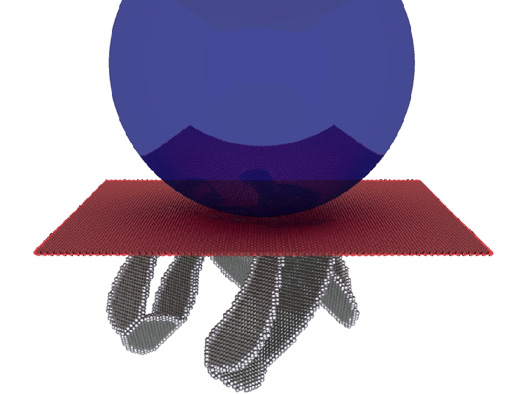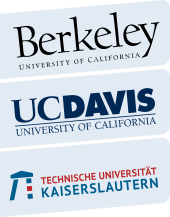

RESEARCH PROGRAM
Title: Molecular Dynamics Modeling of Machining Processes of Composite Materials
Name: Dr. Zhibo Zhang
(former student)
Project description:
Starting situation
An understanding of the physical mechanisms behind machining processes such as cutting or grinding is basic for any modeling of manufacturing systems. Recently molecular-dynamics simulation was applied to the study of machining processes. This method models these processes on an atomistic scale and allows one to obtain insight into both the process dynamics and the detailed structure of the final state. However, on today’s computers only small (nanometric) scales can be simulated; here scale-bridging approaches and multi-scale modeling scenarios, such as they are realized in the present IRTG, become relevant. Up to now atomistic simulation efforts focused on nanoindentation and nanoscratching processes and mostly treated elemental materials. In this project we extend existing simulations to composite materials and to the processes of cutting and grinding.
Approach
The MD simulations are performed using the open-source LAMMPS code [38] with a constant time step of 1 fs. In order to identify the lattice dislocations and to determine their Burgers vectors, the dislocation extraction algorithm (DXA) is used. It is based on the common-neighbor analysis method to identify the local crystallographic structure in the neighborhood of each atom. Dislocation cores are identified by performing Burgers circuits and shrinking them as far as possible. The positions of the dislocation cores are used to construct the one-dimensional dislocation lines. This allows both to calculate the number of dislocations and to measure the length of dislocation lines.
Expected Results
Once a validated model of the Al-MMC has been set up, it appears advisable to first start to study nanoindentation into the composite, since this process has generally been best characterized both on a continuum and on an atomistic level. It will be particularly instructive to compare the results to those obtained for a pure metallic Al and a pure ceramic SiC work-piece; such a comparison will highlight the different materials response exerted by the composite.
Next the relevant processes of scratching, cutting and grinding will be simulated. Quantitative results on the hardness, the friction coefficient, the generation of heat and defects in the material, on the ejected material, and on the wear of the diamond machining tool will be obtained. Of special interest is the performance of the interface between matrix and particulate under mechanical load during the machining process.


